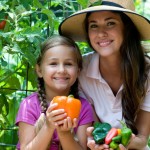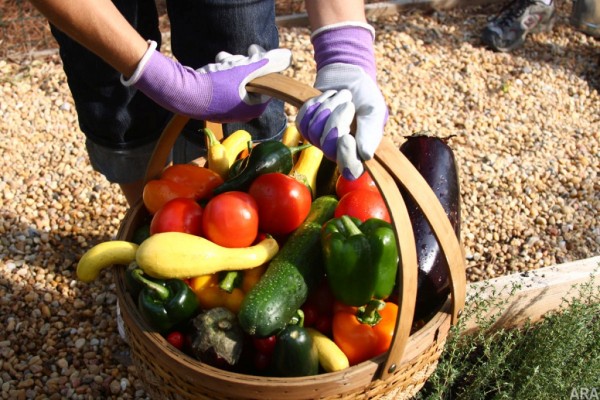Are those packs of vegetables at the nursery saying to you… “buy me, grow me”? Is the high price of red peppers at your grocery making you wish you could grow your own peppers? Are you wanting to get your younger kids outdoors to get them more involved with nature? If so, here are some tips to get you started down that vegetable garden path.
(ARA) – Vegetable and herb gardening is in and studies indicate it will continue to grow in popularity. If you’re not growing your own yet it’s time to start. Why? The reasons are as varied as the people who garden.
Some do it to save money. Others want to ensure their food is chemical-free, and as safe as possible. Still others grow their own vegetables because fresher is just better. Many do it because gardening is good for you and some because it’s still fun to play in the dirt.
Whatever your reason for opting to join the 7 million Americans who grabbed their gardening gear and grew their own vegetables and herbs last year, your road to success is basically the same as everyone else’s – planting at the right time, making sure your soil’s in shape, weeding and watering responsibly, and feeding and nurturing your plants. This season, you won’t have to buy your fresh herbs and vegetables from a farmer’s market; you can grow them on your own, and you don’t need a farm-sized backyard – or pocketbook – to do it.

Avid gardener Stan Cope, president of Bonnie Plants, the largest producer of vegetable and herb plants in North America, growing locally in 75 locations nationwide, offers some time-saving tips to make the growing easy:
* Survey your soil – Your first step is to decide where you’ll put your vegetable and herb garden. Good soil is key. The best soil is loam, a soft, dark, crumbly dirt. Loamy soil holds water, allows for drainage and is easy to dig. If you encounter clay or sandy soil, add peat moss and bone meal so that these soils can also be productive gardening bases.
* Size up your space – When plotting out the size of your garden, you’ll want to be sure it’s big enough to yield a good harvest to make your efforts worthwhile. But if you’re limited on yard space – or have none at all – you can grow vegetables and herbs in containers on a deck, terrace, balcony or even on the windowsill.
* Let the sunshine in – Your plants need plenty of sun – at least six hours a day. A sunny and open location is your best bet for producing a plentiful harvest.
* Pick your plants for your plot – Grow vegetables that are expensive to buy in the grocery store or at the farmer’s market, such as tomatoes and peppers.
A tried-and-true prolific producer, the Bonnie Original Tomato, was developed exclusively for Bonnie Plants in 1967. They come in environmentally friendly, biodegradable pots that you plant right into the soil. Recent trials, planting five of these tomato plants in 25-gallon containers, averaged 100 tomatoes each at an average of 37 pounds per plant. Another tomato that will tip the scales is Bonnie’s Sun Sugar tomato, a yellow cherry type. Trial garden plants averaged 1,228 tomatoes each.
If peppers are your passion, the Yummy Bell Pepper, ripening from green to apricot orange, is a best bet. Trial garden testing of five plants averaged 248 peppers per plant during the summer growing season.
* Time-saving transplants – When you’re ready to begin planting, opt for transplants – seedlings that have already been started – rather than starting from seed. Transplants will buy you lots of time because plants are six weeks or older when you put them in the ground, and you’ll begin harvesting much sooner.
* Feed your food – Your vegetable plants will need food and water to survive and grow. When feeding plants, try to avoid chemical fertilizers that could potentially seep into groundwater. Bonnie Plant Food is a unique, organically based, soybean oilseed extract formula that has demonstrated superior results in the health and vigor of plants.
Give your garden a good watering once or twice a week, although some crops may need more water, especially if your climate is very hot. A thorough soaking, allowing the water to penetrate 4 to 6 inches into the soil, is better for plants than frequent shallow watering.

Gardening is rewarding. It will bring great pleasure as you bring your produce from plot to plate so you can literally enjoy the fruits of your labor. For more information on varieties and gardening advice, visit www.bonnieplants.com.
Happy Gardening,
Dave and Trish
